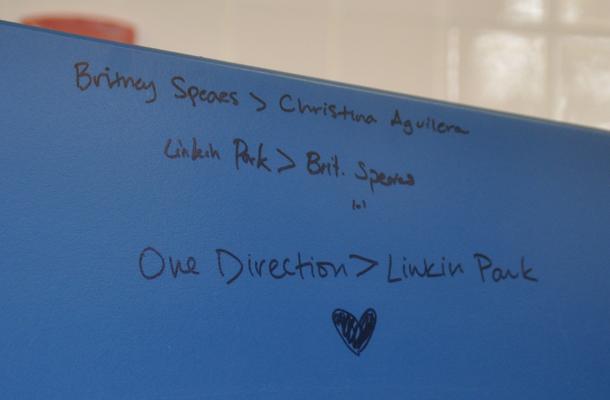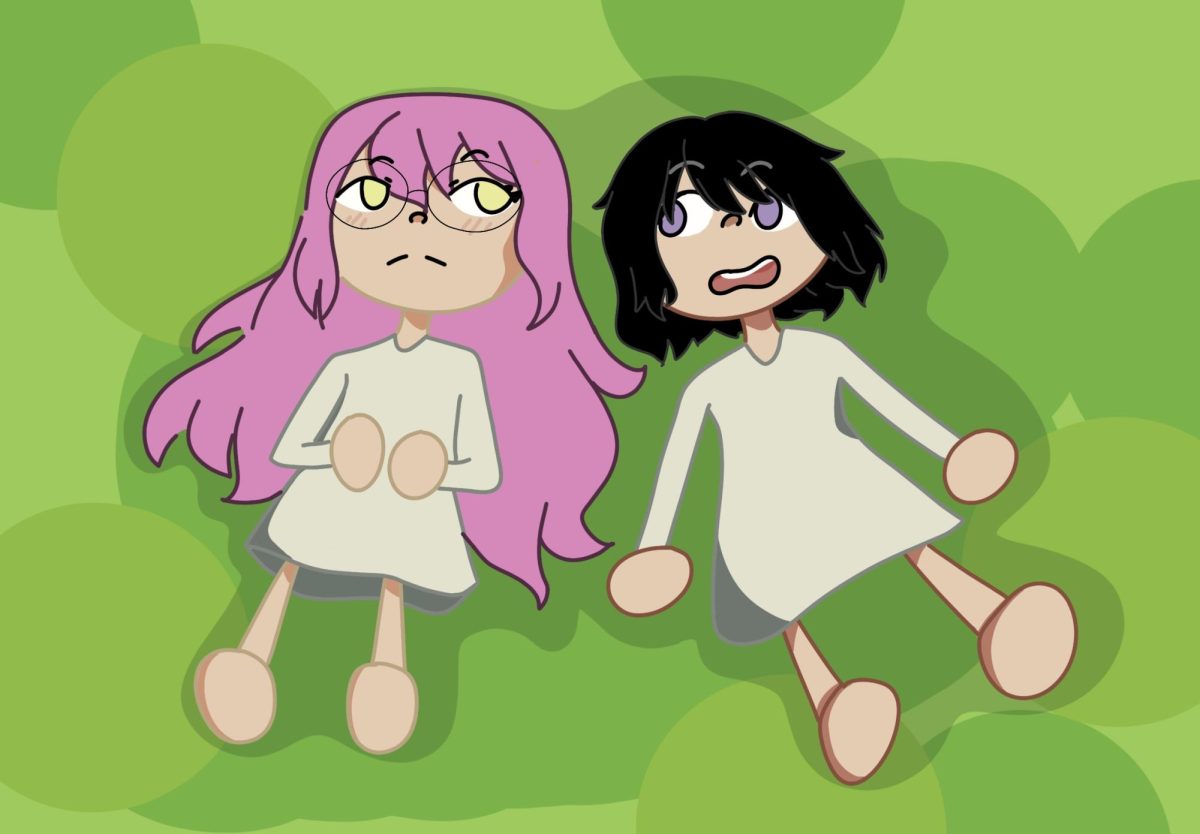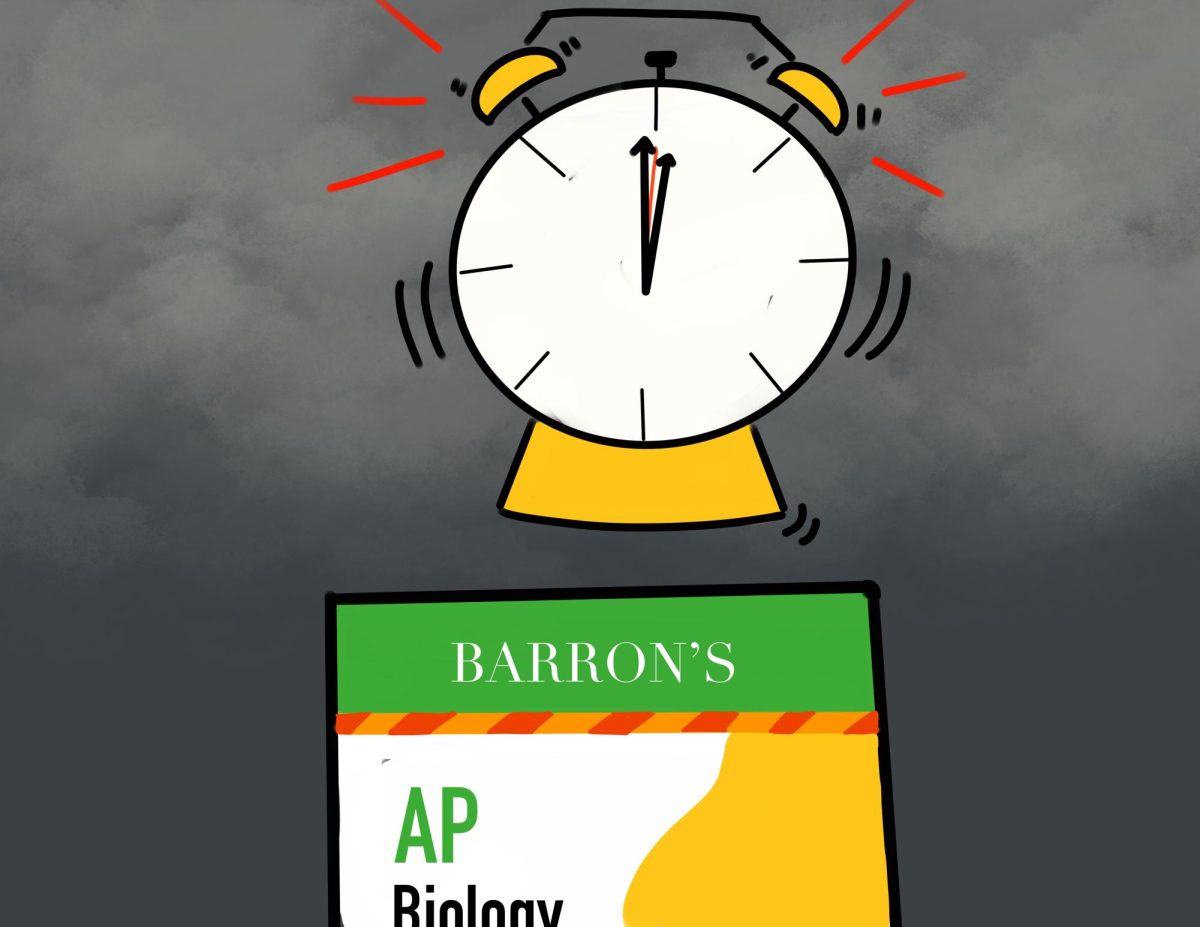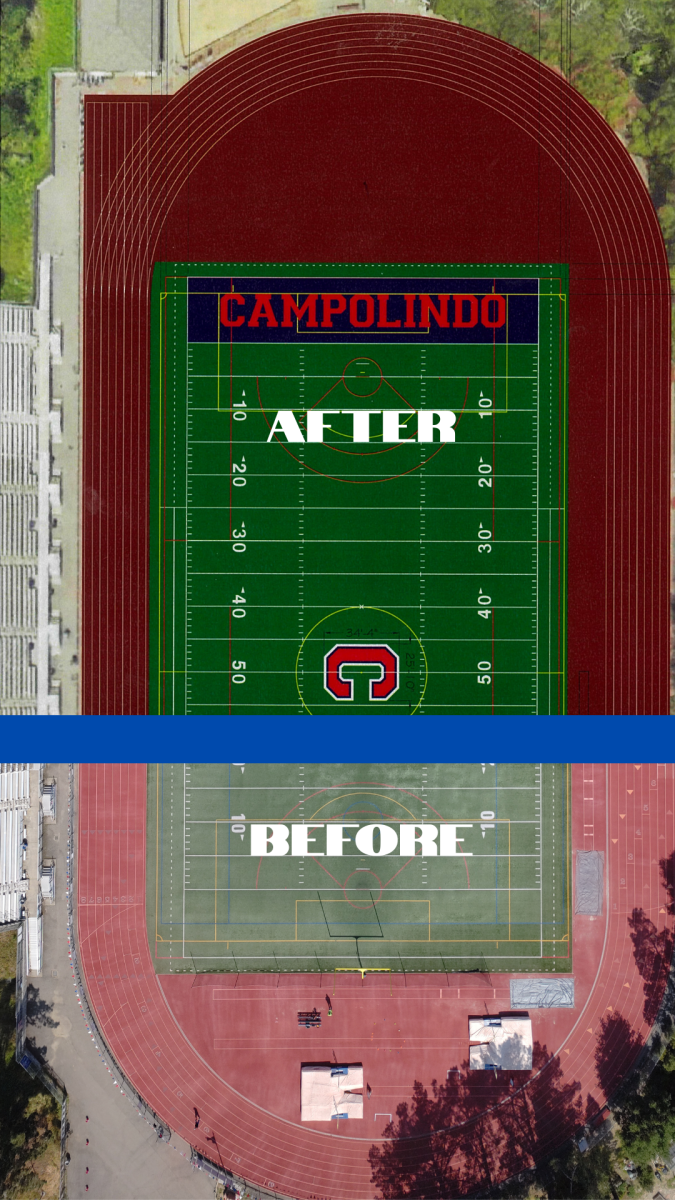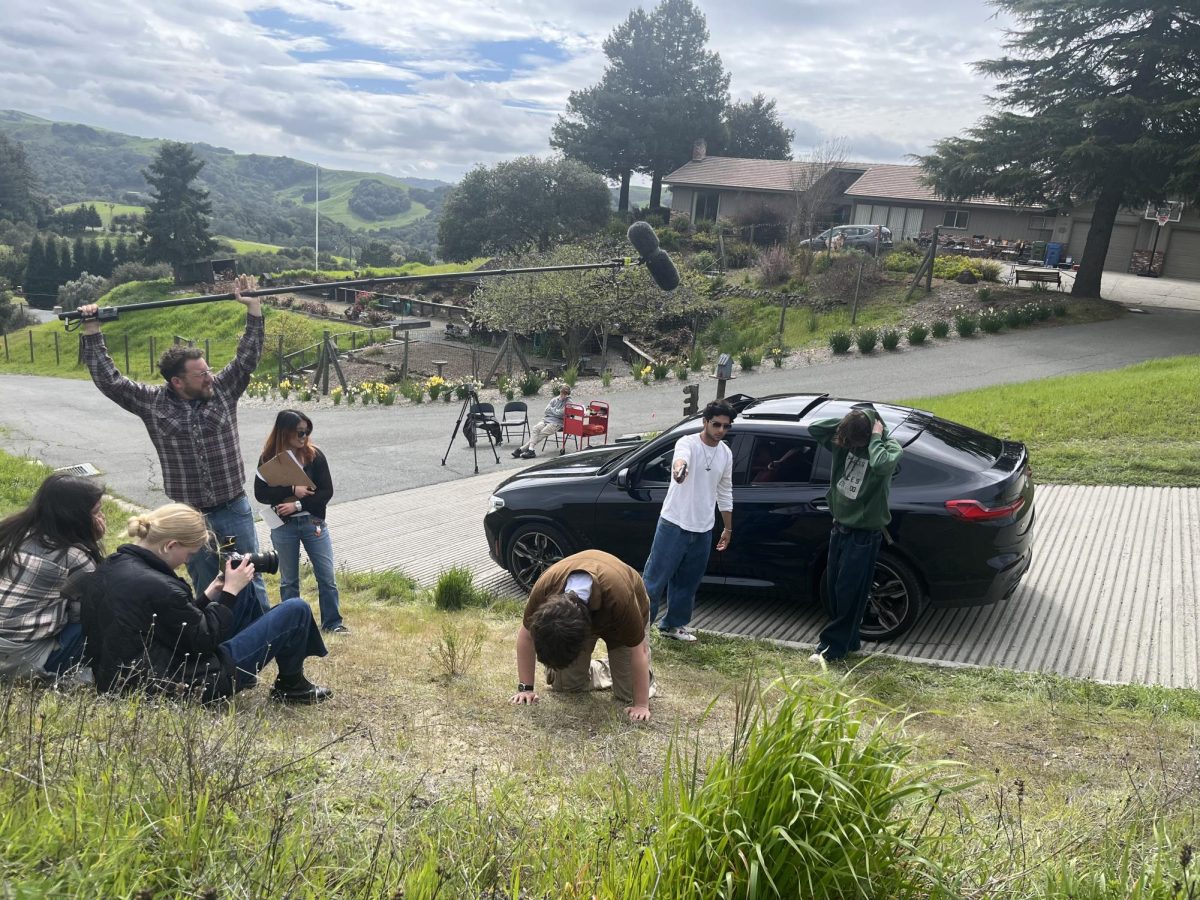Though a punishable campus offense, bathroom stall graffiti can be artistic, expressive, inspirational, or all three.
According to the student handbook, “walls, lockers, restrooms, and furniture should not be marked in any way.” However, both the C hall indoor girl’s restroom and the outdoor one in between halls A and C contradict this decree. Many of their surfaces have been marked, engraved, graffitied, or in some other way vandalized with sayings such as, “Hi Hot Stuff” and “One Direction> Linkin Park> Britney Spears.”
Besides the typical musings of suburban adolescents, the stalls feature passages that, one could argue, belong in an English class or a poetry collective: “Be in love with your life, every minute of it- Jack Kerouac,” and “Comparison is the thief joy- Theodore Roosevelt.”
In spite of the efforts of janitors to wipe off the words, they are as relentless as their poignant meanings.
The authors of these inscriptions must be as diverse as their work- “*$%# society” is in stark contrast with “When you’re sad, just imagine your math teacher angrily licking a lollipop.” Some of the engravings are acute socio-cultural observations: “Yuppie culture ate my town,” describes the upper-middle class and the increasing descent of elitism on a small town. One quip reads “Kill the patriarchy!” and another vandal registers his or her approval with a bold “Yes!”
Several refer to pop culture, including the sci-fi TV show with a cultish fanbase, Doctor Who: “The Doctor Lives” and “BAD WOLF.”
One bathroom author wrote of another, “That person [who carved it] should be honored.” About contributing to the graffiti herself, the same source said, “I wouldn’t be a person who said, bla bla bla, that is bad, or go *$%# yourself in the hall. But I would probably do something like that as a joke, some nerdy thing.”
Some of the messages, including “Have a GREAT day” and “SMILE,” are so sweet that the culprit doesn’t seem to deserve the consequences that a 1st vandalism offense results in, such as police contact and consideration for expulsion.
At Campolindo, graffiti is considered destruction of property; however, in many urban centers it is art, as culturally valuable as any 14th century portrait and far more relevant. If the stall doors were a medium for an art class project, they might be praised for their boldness and vision. The engravings exist in a taboo location, adding to the mystique of their anonymity. If students were allowed and encouraged to mark the surfaces, they would probably remain blank because the risk of consequence would be lost. Some of the most historically significant art has been made to challenge authority.
Campus Supervisor Sue Frederich offers an apposing opinion. She said, “That irritates me. Find some sketch paper. It’s art for you but it’s not for us. So why should we have to look at it and clean it up?”According to Frederich, the product used to clean it up, Vandal, is not earth-friendly and is unhealthy to breath. Custodians are pulled away from other important duties in order to remove the vandalism.
It would be difficult to identify the offenders, so it doesn’t look like graffiti is going to stop anytime soon. Graffiti artists bring laughter, variety and anticipation to the bathroom experience, but also create unfair consequences for those who are obligated to clean it up. Nevertheless, the graffiti remains an interesting representation of our student body. It shows sensitive insight into the minds of students that one just can’t get on a Facebook wall.
